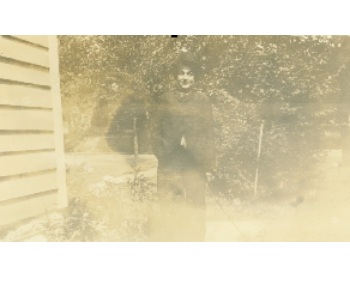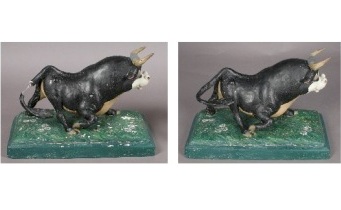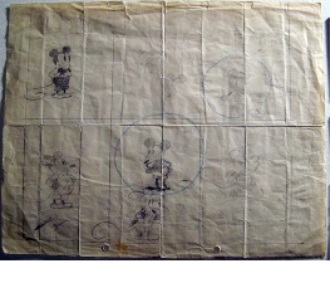This is the third of a five-part series that looks back at the Museum's roots and its journey to opening day, Oct. 1st, 2009.
As the art conservator for the Walt Disney Family Foundation, I feel honored to have under my care a fantastic collection of unique—and often irreplaceable—objects that connect us to Walt Disney’s personal life, his struggles, his achievements, and his amazing creative vision.
Since the early planning of the Museum, the Walt Disney Family Foundation has had the desire to implement the highest standards for the preservation and conservation of its collection. Since 2005, the Collection Department has been actively establishing and implementing policies for safe handling, transportation, housing, and exhibition of the collection. Our goal as a public institution is to make this collection available for enjoyment and research while securing its preservation for posterity.
Preserving this collection is a complex task because of the diversity of materials and techniques used in the creation of the objects. We can find almost every material. Some of them are extremely fragile such as paper, textiles, and photographs. Others are more enduring, as in the case of metals, glass, and ceramics. The manner in which the materials appear in our collection is equally varied. Every possible use, configuration, and combination is present. Under our care we have the challenge of preserving many of the Walt’s Oscars, which have delicate gold-plated surfaces and wooden bases.
In addition, there are many original personal documents and photographs. In many instances the objects in our collection are considered memorabilia, for which the intention of preservation was either not predicted or never considered. All of the objects present particular challenges that we are required to address individually. However, we can be sure that we will be able to prolong the life of an object by sustaining stable conditions, providing a dry and cold environment, and exercising responsible exhibition practices.
Let’s take for example this unique original photograph of Walt Disney at age 10 dressing up like Charlie Chaplin , circa 1911. This priceless image shows severe signs of fading. There is nothing we can do to reverse the damage that has already occurred before entering the collection, but we are able to slow down significantly the process of deterioration by providing a dry and cool storage environment. In case this photograph is requested for exhibition, we will require low light levels. We will also monitor the stability of the object using high-resolution digital images to create condition records to evaluate any possible changes.

In the case of this original character model statute of Ferdinand the Bull, circa 1930, the object required stabilization and repairs before we could safely exhibit this object. Tonja Morris, our contract object conservator, documented the damage, consolidated all the weak areas, cleaned the surface, created a fill to compensate for loss, and performed some minor color compensation in areas the needed it the most. With relatively minor intervention, we were able to stabilize and restore the aesthetic integrity of the object while preserving its originality.
To make matters more complicated, we know that not every flaw should be repaired because marks and damage could be an indication of how the object was used, or even more importantly, could offer proof of its originality. Take for example the earliest known drawing of Mickey Mouse, now part of the Walt Disney Family Foundation collection. When observed under light coming from a low-angle source, as seen in the image below, numerous folds and creases are revealed. It is said that Walt Disney often folded notes and drawings to carry in his shirt pocket. Those folds could easily be the evidence that this drawing is connected to the development of a new character, now known as Mickey Mouse. We obviously accept those creases and let them become part of the history and aesthetic of the object.

Walt Disney had a magical effect. At the Walt Disney Family Museum we want many future generations to remember his magic. With this in mind, one of the most important goals of the Collection Department is to make sure that the collection will be in the best possible condition for future generations to study and appreciate. I am convinced that with the help of the collection, Walt Disney’s story will continue to teach others to dream, to carry on a tradition of creativity and innovation, and to amaze and inspire future generations.
